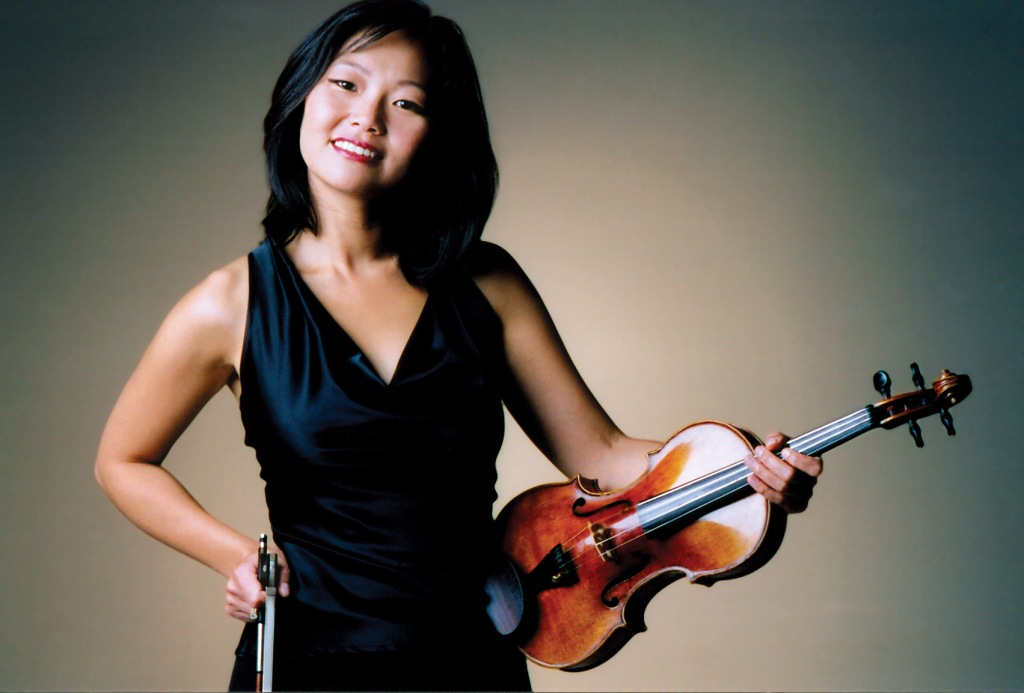Concert will be streamed, and performed live to invited supporters
By Peter Alexander April 29 at 7 a.m.
“We are so excited to be playing music—and in front of an audience of our [invited] supporters!” Cynthia Katsarelis, music director of the Colorado Pro Musica Chamber Orchestra, says.
“Those 30 or 35 people are going to get a tsunami of happiness to actually hear [live] music.”
Violin soloist Yumi Hwang-Williams will appear with Katsarelis and the orchestra to perform “Spring” and “Summer” from Vivaldi’s Four Seasons. Other works will be the Suite from Copland’s Appalachian Spring in the original version for 13 instruments, and the premiere of a piece by CU College of Music graduate student Jordan M. Holloway. This performance will also be available in a live stream at 7:30 p.m. Saturday, May. 1.
Members of the public who want to share in the “tsunami of happiness” may purchase tickets for the stream here.
The program opens with the premiere of Holloway’s Three Coloradan Snowscapes, winner of Pro Musica’s annual Composition Competition. The three movements are musical depictions of scenes Holloway has experienced. They are also likely familiar to many Coloradans: “”Flurries (The Loch, June 2020),” “White Abyss (Independence Pass, October, 2020)” and “Downhill (Vail, February 2019).”
The first movement “is really cool,” Katsarelis says. “He’s got these blips and blops that are definitely like the snow hitting you in the nose—something like that. And lovely soaring themes that are fitting for the mountains.”
For the second movement Holloway describes a drive over 12,000-foot Independence Pass with clouds filling the valleys below. “The typically clear valleys were filled with a great fog, which created this amazing and visually impenetrable wall of snow and vapor,” Holloway wrote in program notes.
“The second movement is particularly interesting” is Katsarelis’s response. “It’s aleatoric [using elements of chance] and unmeasured.” As conductor, she will mark points that are spaced 5 or more seconds apart—“just telling [the players] when to change texture and pitch.
“You’re creating the soundscape but it’s not technically challenging—it’s just fun.”
The third movement, “Downhill,” is “a tight-knit image of an alpine skier, very fast-paced with angular melodies that make for a turbulent two minutes,” the composer wrote. After looking at the score, Katsarelis decided he’s a pretty good skier.
“I think it’s a double or triple diamond that he must be on,” she says. “The reason I think this is the underlying rhythm is the ‘Mission Impossible’ rhythm!”
For a concert during the pandemic, portions of Vivaldi’s Seasons are an obvious choice. It only calls for string players, who can wear masks while performing; just about every string player knows The Seasons; and it’s always popular with audiences.
“Pretty much every violinist in the orchestra” knows the solo part, Katsarelis says. “Even I can play it!” But she wanted to ask Hwang-Williams, concertmaster of the Colorado Symphony, because Katsarelis knows that she’s up for most anything. “I really know I can rely on Yumi,” she says.
The final part of the program is a piece that Katsarelis believes is practically tailor made for our current time. “I find [Copland’s Appalachian Spring] a fascinating piece,” Katsarelis says. “It’s so easy to just take it as this wonderful, optimistic, joyful American work, but there’s something deeper there, if you’re inclined to look for it.”
Katsarelis believes that is particularly true of the original version, which was written for the 13 instruments that would fit in the pit of the Coolidge Auditorium at the Library of Congress where the first performance of Martha Graham’s ballet took place. “The intimacy makes the emotion of it more powerful,” she says. “It will be a very, very personal expression from all of the players.”
The score is noted for it’s spare texture and open chords, which were aspects of American modernism of the 1940s when it was written. That aesthetic is reflected in the music, but was also evident in the dance and the very limited sets designed for the premiere by Isamu Noguchi.
“The open chords, like the open set of Noguchi, leaves a lot of space for our projections of our hopes, dreams,” Katsarelis says. “And inside is this space that you can inhabit in a really intimate and reflective way.”
The intimacy of the chamber version and the open, welcoming aesthetic of Appalachian Spring fit the current moment, she believes. “I think we all are just dying for a human connection that music is so uniquely capable of bringing,” she says. “And that Copland can do more powerfully than almost any other piece I can think of.”
The excitement that Katsarelis and the players feel about playing together again and sharing their music-making with an audience also carries a lesson, Katsarelis says. “It’s been a really rough year. I’m ecstatic about the fact that we’re about to make music, but there’s a lot of things I hope never to take for granted again, ever.”
# # # # #
Pro Musica Colorado Chamber Orchestra, Cynthia Katsarelis, conductor
With Yumi Hwang-Williams, violin
- Jordan M. Holloway: Three Coloradan Snowscapes (World Premiere)
—I. “Flurries (The Loch, June 2020)”
—II. “White Abyss (Independence Pass, October, 2020)”
—III. “Downhill (Vail, February 2019)” - Vivaldi: “Spring” and “Summer” from The Four Seasons
- Copland: Appalachian Spring, Ballet for Martha, Suite for 13 players
Stream available from 7:30 p.m. Saturday, May 1
Tickets available here.































